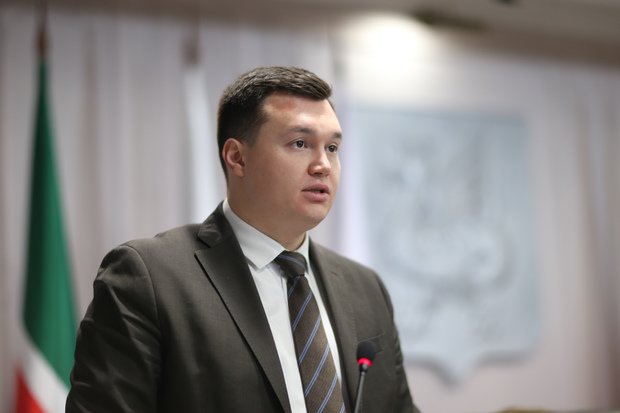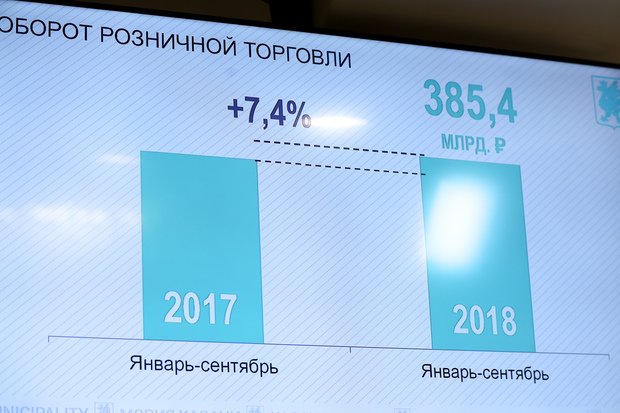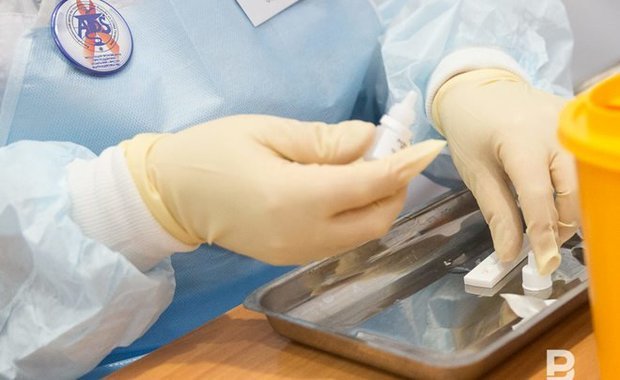Kazan ceases to give birth, to interest migrants and loses to Yekaterinburg in the race for investments
The results of socio-economic development: investments and production are growing, but the citizens do not feel increasing welfare
The results of the socio-economic development over 9 months of 2018 in Kazan were summed up at Business Monday. If in terms of economic component the official figures of the Executive Committee are pleasing — investments are attracted, production is increasing, then in social terms, ordinary citizens do not feel this wellbeing, because they give birth less, die more, and Kazan no longer attracts migrants — a quarter less guests came to our city from neighbouring countries this year. What Kazan can boast is a decrease in officially registered HIV-infected people. But the virus is ''getting older'' — the risk group is no longer young people, but citizens from 50 and older. Read the details in the material of Realnoe Vremya.
Investments are growing in construction and property operations
The index of industrial production in Kazan amounted to 106,4% for 9 months. The socio-economic situation has been called stable by the city authorities, for comparison they cited the growth rates of industrial production in Tatarstan and Russia, where they were more restrained — 101%.
For 9 months, large and medium-sized businesses produced goods and services at 220 billion rubles, which is higher than last year by 7,5%. A noticeable increase was shown by manufacturers of food products (+54,7%), of machinery and equipment (+25,8%), paper and paper products (+18,2%), metal products (+14,7%) and grid companies (+13,9%). The worst results were in the industries such as transport and non-metallic mineral products.
''In previous years, we had a stagnation, which was associated with that the enterprises were invested in the development, new production, equipment. Now investments have begun to pay off, and services have begun to be provided in greater numbers,'' said chairman of the committee for economic development of the Executive Committee Arthur Valiakhmetov.

Kazan enterprises have attracted 106,4 billion of investments since the beginning of the year, which is by 2,6% more than last year. In the structure of investments in fixed assets, 50,9% are borrowed funds, 49,1% — own funds. Kazan took the second place after Yekaterinburg in the rating of million-person cities in terms of investments. A significant share of investments is concentrated in construction (54,5%), the volume of work performed in this area by large and medium-sized enterprises amounted to 19,3 billion rubles. The second place by attracted investments — operations with property (44%).
Small business switching to shady schemes
Small and medium-sized businesses paid taxes (excluding personal income tax) by 13% more than last year – 1,8 million rubles. This is a third of all tax revenues to the budget of Kazan. At the same time, Valiakhmetov noted that the average monthly salary of employees of small enterprises for 9 months showed a decrease of 8,6%.
''It isn't excluded that decrease is caused by that some apply shady schemes,'' the official assumed.
The retail trade turnover increased by 7,4% and amounted to 385,4 billion rubles, and in the catering sector — by 9,3%. The World Cup had a significant impact on growth.
''We have analyzed the growth and found out that the catering and retail enterprises that were involved in the World Cup showed significant growth, but the enterprises that were located further did not show such positive dynamics. We understand that the picture will change next year, but there will also be a positive trend. There is no fears for the fall of retailing,'' Valiakhmetov believes.

Energy and gas industry earns the most
The average monthly salary in Kazan for the first 9 months of 2019 reached 43,200 rubles in large and medium-sized enterprises — the increase in real terms, taking into account inflation, is by 7,8%. Those engaged in financial activities earn the most (54,300 rubles) and the production and distribution of resources — energy, gas and water (56,600 rubles). The average salary in health care, according to the Executive Committee, amounted to 39,000 rubles, in education — 32,400 rubles.
Other figures speak more eloquently about the socio-economic situation in Kazan. The birth rate in the city is falling — 15,794 babies were born in 9 months, which is by 3,5% less than in the same period last year. Mortality, on the contrary, has increased by 0,2%.
The capital of Tatarstan has ceased to be attractive even for migrants — for 9 months 1,006 people came to work to Kazan from neighbouring countries, which is by 26% less than last year.
HIV spread to 50-year-olds
Instead, there is an increase in migration of the population with HIV status to Kazan. If for 10 months of last year in the city there came, according to official data, 34 HIV-infected, for 10 months of this year — 76.
Today in Kazan there are 5,110 people registered with this diagnosis, 60% of them receive antiretroviral therapy, the annual course of which costs about 70,000 rubles. In Russia, unlike in developed countries, it is possible to receive HIV drugs only after reaching a certain number of infected cells in the blood — this approach is the subject of criticism, experts believe that this leads to the spread of HIV.

Two thirds of those infected are men, 70% of them have no family and no permanent sexual partner. ''It is the unemployed who suffer from alcoholism,'' they clarified at Business Monday. 72,8% of people living with HIV got the infection sexually, earlier most infected were through intravenous drug use.
The age structure has also changed. If earlier HIV was a disease of young people, now 74,1% of cases are detected in people aged 30 to 50 years. Twice as many cases of HIV infection are registered in people over the age of 50. At the same time, the number of those infected before the age of 30 has halved.
''This indicates that the promotion, which was aimed at young people, does work,'' the officials concluded.
In general, there is a decrease in new HIV cases in Kazan. If in 2015 it was revealed 36,5 cases per 100,000 people, in 2017 – 28,1 cases. The decrease in the city is of 18%, while in Russia there is an increase of 2,2%.'' Now the HIV prevalence in Kazan is 410,9 cases per 100,000 people.